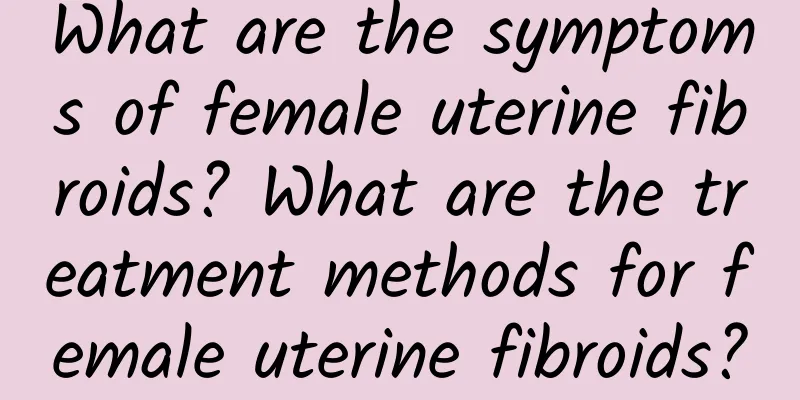What are the symptoms of female uterine fibroids? What are the treatment methods for female uterine fibroids?

|
Uterine fibroids are one of the most common benign tumors in the female reproductive organs and one of the most common tumors in the human body. They are also called fibroids and uterine fibroids. Because uterine fibroids are mainly composed of the proliferation of uterine smooth muscle cells and a small amount of fibrous connective tissue exists as supporting tissue, they are more accurately called uterine leiomyoma. Uterine fibroids. What are the symptoms of uterine fibroids in women? 1. Uterine bleeding: occurs in more than half of the patients. It is often manifested as menorrhagia, prolonged menstruation or shortened menstrual cycle, accounting for about 2/3, and continuous or irregular bleeding accounts for 1/3. 2. Abdominal mass: Patients feel the abdominal mass themselves, which is usually obvious in the morning when the bladder is full on an empty stomach after the uterine fibroids grow out of the pelvic cavity. Uterine fibroids are generally located in the middle of the lower abdomen, and a few may be biased to the lower abdomen, hard or uneven. 3. What are the clinical symptoms of uterine fibroids in women? Pain: Pain is caused by the tumor compressing the pelvic blood vessels, causing congestion, or compressing the nerves, or the pedunculated submucosal fibroids can stimulate the uterus to contract, and the uterine cavity is discharged to the outside, causing the cervical canal to become widened and painful; or the necrosis and infection of the fibroids cause pelvic inflammatory disease, adhesion, traction, etc. 4. Increased leucorrhea: Enlargement of the uterine cavity, increase in endometrial glands, accompanied by pelvic congestion or inflammation can all increase leucorrhea; when submucosal fibroids ulcerate, become infected, bleed, or necrotize, bloody leucorrhea or purulent and smelly leucorrhea will occur, and the amount can be large. 5. Infertility: Patients with uterine fibroids have their uterine horn fibroid tissue compressing the entrance of the fallopian tube, causing the uterus to deform, hindering the implantation of the fertilized egg, and ultimately leading to infertility. |
<<: What are the symptoms of uterine fibroids and what are the methods to suppress uterine fibroids?
>>: What are the symptoms of uterine fibroids? What are the causes of uterine fibroids?
Recommend
Is there a relationship between dysmenorrhea and uterine malformation?
Dysmenorrhea may be related to uterine malformati...
How long does it take for an ectopic pregnancy to occur after it is cured?
Ectopic pregnancy is the most common gynecologica...
Treatment of cervicitis
Cervicitis is an inflammation caused by the invas...
Burn fat in 4 minutes! Tabata Training
In this era where efficiency is paramount, time a...
Is sugar addictive? American scholars propose "sugar tax" control
Recently, strong cold air masses have been coming...
What is cervical erosion of degree 2? Detailed medical knowledge about cervical erosion
Cervical erosion is a disease caused by patients ...
The causes of pelvic inflammatory disease and back pain and how to treat it effectively
Why does pelvic inflammatory disease cause recurr...
Super spice! Curcumin helps with weight loss and protects the heart
Turmeric is an ancient spice that has been common...
What are the common causes of vulvar leukoplakia?
Vulvar leukoplakia is the most common gynecologic...
How to regulate irregular menstruation and what to eat
How to regulate irregular menstruation and what t...
What are the types of pelvic inflammatory disease?
Pelvic inflammatory disease is a common disease a...
Abortion is not a trivial matter, and you need to pay attention to these three misunderstandings!
As the concept of human nature becomes more open,...
Treatment of severe cervical precancerous lesions
When it comes to the treatment of cervical precan...
What are the symptoms of uterine fibroids?
Uterine fibroids are the most common gynecologica...
What is a giant uterine leiomyoma? Definition of a giant uterine leiomyoma
What is a giant uterine leiomyoma? Definition of ...









